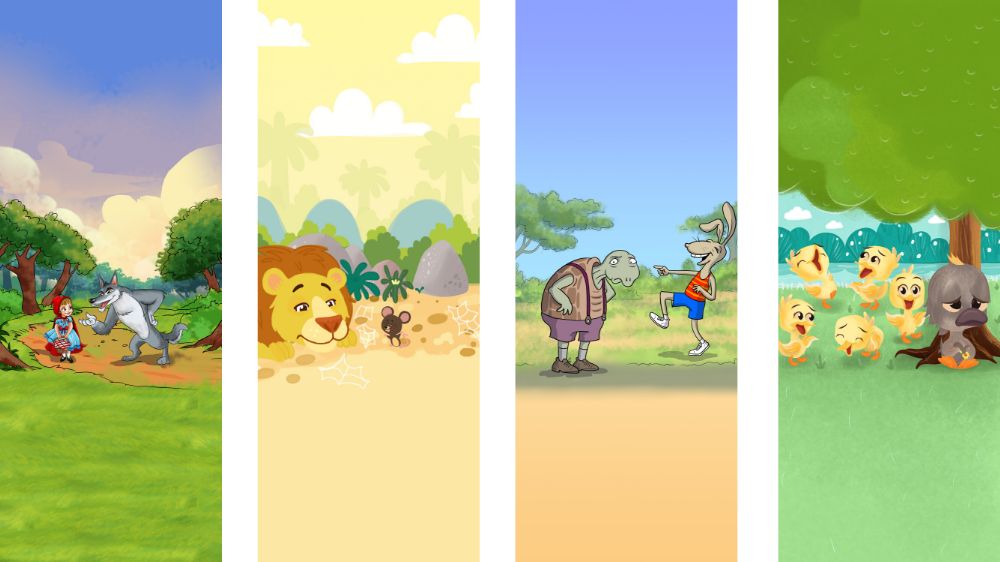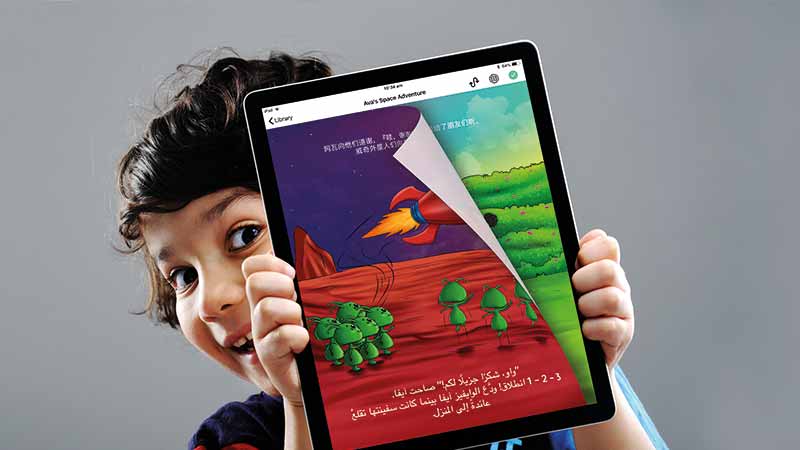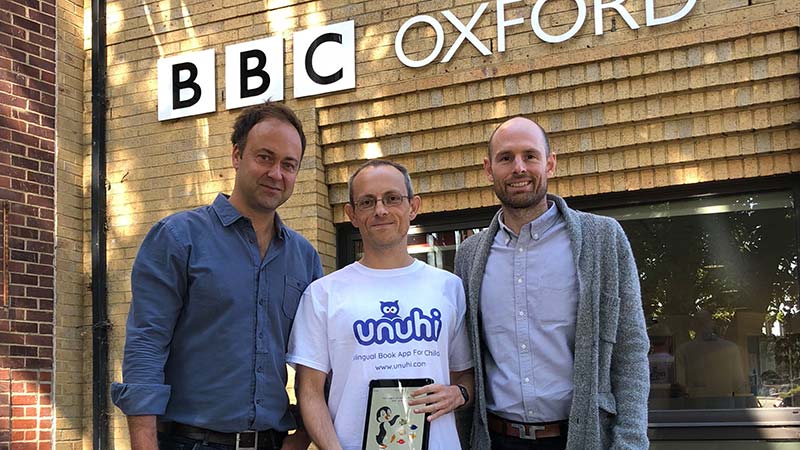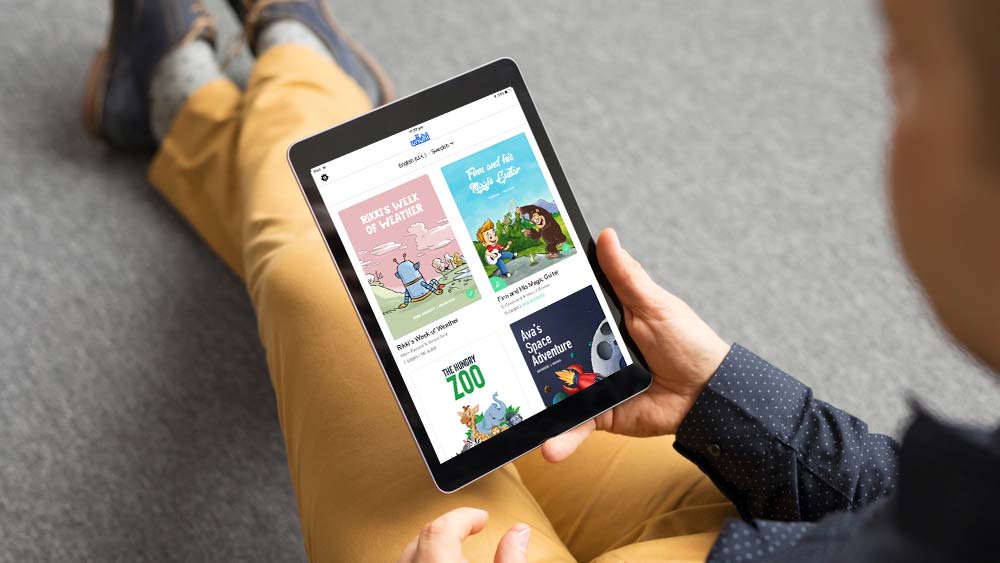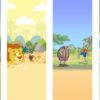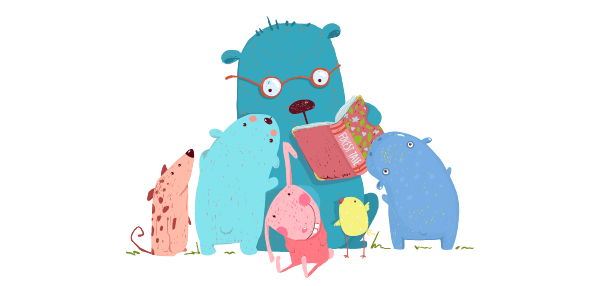Here at Unuhi HQ we love good illustrations and know how important they are to bringing children’s books to life. They need to be engaging and help tell the story, especially to a younger audience who are learning a new language.
As we grow our library we will be looking for different styles and approaches from illustrators to bring our future stories to life. Could you be the next artist to illustrate a story for us? Perhaps the next winner from our international story writing competition could be illustrated by you!
Our first story “Rikki’s Week Of Weather” was illustrated by Simon Reid, an Oxfordshire based illustrator. We love Simon’s vision for Rikki and caught up with him to find out more about how he got started, his work and inspiration.
1. Hi Simon, when did you discover your passion for illustration? Who were your inspirations and which illustrators do you admire?
Like most illustrators, I can’t remember a time when I wasn’t drawing. Reading The Beano cover to cover was a weekly ritual for me, and later I moved onto other comics, like Hergé’s Tintin, which is still a major inspiration. Eventually I started creating my own characters and stories, and my parents kept buying me exciting new art materials, encouraging my early efforts (and my stationery addiction). For a while I drew a regular comic about the unlikely adventures of our pet cats, called The Cat Gang. It was drawn in fine-liner and coloured pencils on A4, assembled into a booklet with a sellotaped spine, and then circulated around family members. Seeing people enjoy something I’d created out of nothing has stuck with me, and I’ve never really stopped doing that kind of thing!
A couple of my favourite cartoonists working today are Scott Campbell and Jim Woodring.
2. What kind of illustrations do you do and for what purpose?
My style is quite cartoony and whimsical, and luckily seems to lend itself to lots of different purposes. This year my work has been seen in textbooks, museums, video games, comics anthologies, exhibitions and at academic conferences. I like having this interesting mix of work and I hope it continues.
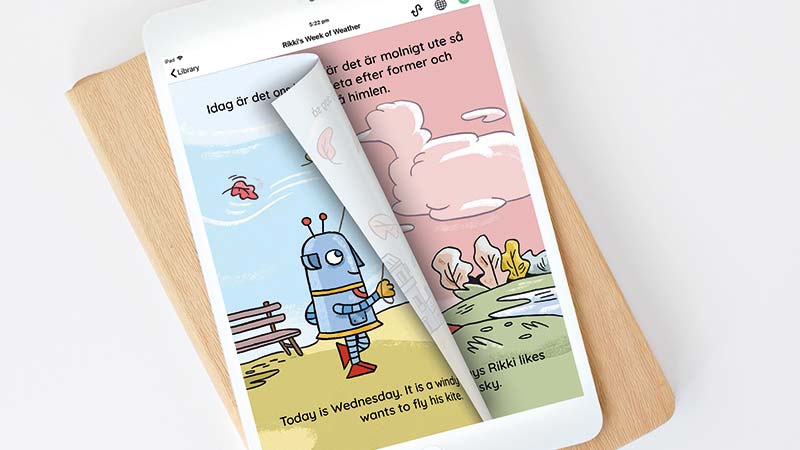
3. Do you prefer one medium over another?
Almost all of my work is completed digitally, using a graphics tablet and my computer – but I like to begin with lots of pencil drawings, just taking my time to develop the idea until I’ve settled on shapes and compositions that seem to work. Lately I’ve been trying to get used to drawing with an Apple Pencil on an iPad.
4. What were your thoughts for how you might illustrate Rikki’s Week of Weather?
Due to the target audience of the app, I had to resist adding too much visual information – it was all about communicating the particular vocabulary. It was also important not to clutter up the areas at the top and bottom of the screen, so that the text in the two chosen languages is always as readable as possible. Even within those limitations, I enjoyed coming up with the incidental details like the crab on the beach, the duck-shaped cloud, or Rikki’s spare arm left on the desk. The snowy day was my favourite page to illustrate!
I’m quite pleased with the friendly style with chunky, clean linework that we settled on, and I think Rikki has potential for more stories. I’d like to find out more about his home life, and how often he needs recharging.
5. What are your personal hobbies and interests?
Books, cats, music (I play bass guitar in a band) and video games.
6. What advice can you give to all the budding illustrators out there?
Draw a lot! But try to draw lots of different things, rather than settling onto a few things you can reliably doodle – that way you’ll keep developing and it’ll get easier to translate everything you see (or dream up) into your own unmistakable style. But it’s never that easy, so don’t get discouraged if it’s not quite working, as the next breakthrough might be one sketchbook page away. Don’t worry too much about having the best tools – just find something that feels comfortable, and get cracking. Don’t compare yourself to other artists’ successes or styles. Encourage and support other creative people that you like, and collaborate with them when you can.
We will certainly be working with Simon again soon on another adventure for Rikki, he’s proved really popular with our readers worldwide. For more information on Simon please visit his website at www.simonhreid.co.uk.
Unuhi: Bilingual Books for Children is available to download free on both iOS App Store and Google Play for Android. Rikki is our free book for everyone to try and it’s available in any combination of 20 languages, as are all our stories and flashcards. You choose!


